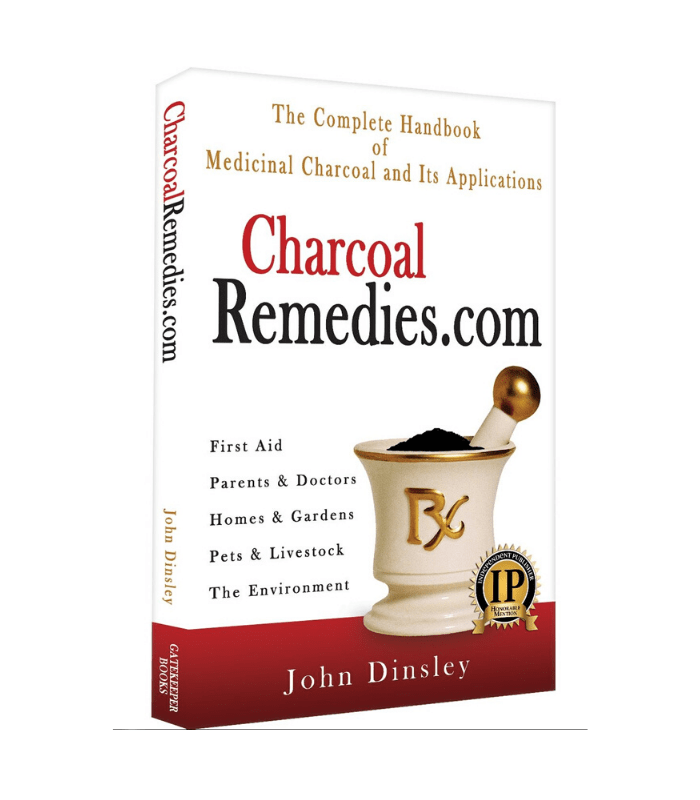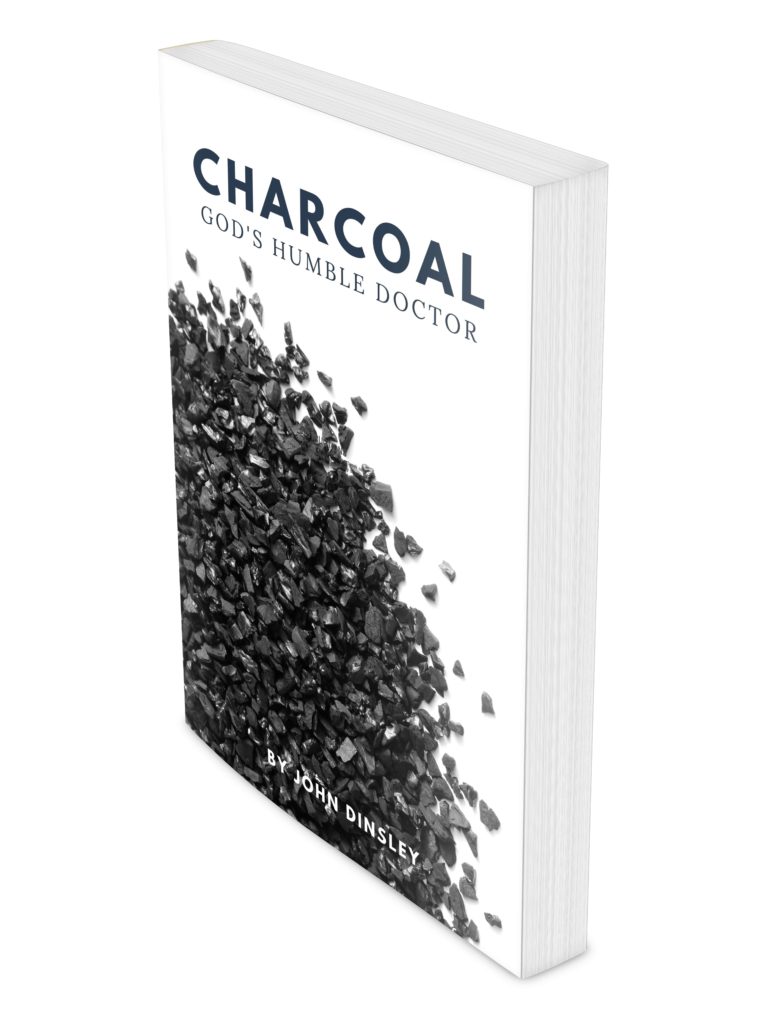Animal Poisoning Remedy

Activated charcoal is a powerful antidote and detoxicant for a broad range of poisoning in animals. The ASPCA National Animal Poison Control Center recommends activated charcoal as the treatment of choice for many poisons.
Here are the recommendations on how to manage a poison emergency posted by the Animal Poison Control Center: 888-4ANI-HELP (888-426-4435)
- The recommended dose of activated charcoal for all species of animals is 1-3 gm of charcoal per 1 kg body weight.
- Repeated doses of activated charcoal every four to eight hours at half the original dose may be indicated when there is a possibility of reabsorption of poisons filtered out by the liver.
Activated charcoal can be given orally with a large syringe or with a stomach tube. Activated charcoal should not be given to animals that have ingested caustic materials. It should be noted, that those substances that are only slightly adsorbed by charcoal in humans, are likewise poorly adsorbed in your pets. According to statistics, both accidental and intentional poisoning of domestic animals is on the rise. The number of poisons is longer than one’s arm but the ASPCA Animal Poison Control Center has put together a convenient list of common poisons around the home that includes: alcoholic beverages, chocolate (all forms), coffee (all forms), grape products, macadamia nuts, moldy or spoiled foods, raisins and grapes, even garlic, and a number of common people medications (pain killers, cold medicines, anti-cancer drugs, antidepressants, vitamins, diet pills).Why not chocolate? “In general, the less sweet the chocolate, the more toxic it could be. In fact, unsweetened baking chocolate contains almost seven times more theobromine as milk chocolate. Vomiting, diarrhea, seizures, hyperactivity and increased thirst, urination and heart rate can be seen with the ingestion of as little as 1/4 ounce of baking chocolate by a 10-pound dog.”Why not grape products? “At the current time, we know that grapes and raisins appear to cause renal failure in dogs who’ve ingested large amounts. However, we have not determined with certainty the toxic component, or the exact mechanism that causes renal failure. It is also not clear if only certain dogs are affected, or if long-term ingestions can lead to the same effects that a large one-time ingestion can. Because there are still many unknowns regarding the toxic potential of grapes and raisins, it is advisable not to give grapes or raisins to dogs in any amount.” Other less well known poisons include fabric softener sheets, mothballs, post-1982 pennies (due to high concentration of zinc), proximity to aluminum smelters, slug and snail baits containing metaldehyde, liquid potpourri, ice melting products, citronella candles, compost pile fertilizers, flea products, swimming-pool treatment supplies, fly baits containing methomyl, products sweetened with xylitol. As you can see, home sweet home can be a dangerous place for a pet. And, who would ever suspect pet food? This pet food contamination report was published by Cornell Univ. Jan 2006: “Diamond, Country Value, and Professional brand dog foods have been recalled for containing highly toxic aflatoxins, they have caused an estimated 100 dog deaths in recent weeks, say Cornell University veterinarians, who are growing increasingly alarmed. Some kennels and consumers around the nation remain unaware of the tainted food, which may have been shipped to more than two dozen countries, and as a result, they continue to give dogs food containing a lethal toxin….” Severely affected dogs suffered from intractable vomiting and internal bleeding. Liver damage proved fatal for most cases. Surviving dogs may develop chronic liver disease, perhaps liver cancer. If food was stored in a wooden container, they recommended the container be destroyed, and plastic and metal containers be sanitized with bleach. You will notice on our Poison List that activated charcoal is known to adsorb these potentially fatal aflatoxins. The most common plant-based poisons available to pets include: Marijuana, Sago Palm, Lilies, Tulip/Narcissus bulbs, Azalea/Rhododendron, Oleander, Castor Bean, Cyclamen, Kalanchoe, Yew. All these common household plants contain toxic components which can result in vomiting, diarrhea, coma, convulsions, or death.
Blue-green algae, down in the pond, is so deadly animals typically die at the water’s edge.
Another emerging cause of accidental poisoning is cocoa bean mulch. Cocoa bean shells, a by-product of chocolate production, are sold as mulch for landscaping. Homeowners find cocoa mulch desirable because it degrades into an organic fertilizer and provides an attractive color and odor. While unprocessed beans contain 1-4% theobromine/0.07-0.36% caffeine, cocoa bean mulch contains 0.19%-2.98% theobromine. Some dogs find the mulch attractive and eat small to large quantities. Theobromine is toxic to animals.
Sad to say, there is also intentional poisoning. Strychnine and antifreeze laced foods are the most common, but warfarin (rat and mouse bait) is also used.
For caged animals in zoos lead-based paints can often be fatal.
Considering how many potential poisons there are available to our curious innocent pets, does it not make good sense to also have activated charcoal powder on hand… just in case? Of course it does!
“One day Magoo snagged a box of raisins from the pantry, and ended up eating an entire pound of the sweet treats. Other than loosing their treats, Magoo’s owners didn’t think much about it. Lots of people share grapes with their dogs, and often use raisins as training rewards. So, it hardly seemed the kind of emergency that required a call to the veterinarian. Nevertheless they did call and found out that around 1999, the APCC began noticing a trend in dogs that had eaten grapes or raisins. Nearly all developed acute kidney failure. In all of the cases, the ingredients for potential acute renal failure were the same. It didn’t seem to matter whether the grapes were purchased fresh from grocery stores, grown in private yards, or which brand was eaten. The amounts ranged from a single serving to over a pound, and the cases were evenly spread geographically. Dogs who ate the grapes or raisins typically vomited within a few hours of ingestion. At this point, some dogs would stop eating, and develop diarrhea. The dogs often became quiet and lethargic, and showed signs of abdominal pain. These clinical signs lasted for several days, sometimes even weeks. As kidney damage developed, the dogs produced less and less urine. Death occurred when they could no longer produce urine. In some cases, dogs that received timely veterinary care still had to be euthanized. To date, after extensive studies, there is still no known reason why the animals reacted as they did. But, even though the exact cause of the kidney failure is unknown, dogs can be treated successfully by inducing vomiting soon after the ingestion of grapes, and giving activated charcoal to help prevent absorption of potential toxins.” CharcoalRemedies.com page 174 Fortunately for Magoo the veterinarian knew to give charcoal. And now you do too.
Read Your Stories and, to learn more how to treat your pets or livestock with charcoal, get the book CharcoalRemedies.com The Complete Handbook of Medicinal Charcoal. From camels to cats, from dogs to chickens you will be touched by the numerous heart-warming stories of how this simple natural remedy, charcoal, healed their wounds and saved their lives.

John Dinsley
Born in British Columbia, Canada, John Dinsley has lived, and worked from South America to the North Pole, from Nova Scotia to Nepal. He is trained as a lifestyle counselor, teaches public health programs, home remedies workshops, and has operated a family care home. He and his wife Kimberly are the owners of Charcoal House LLC. They often travel together across the U.S. and internationally to conduct charcoal workshops. He is a carpenter by trade, has managed an organic market garden business, and volunteered in overseas development work. When he is not building, teaching or gardening, he enjoys writing.


